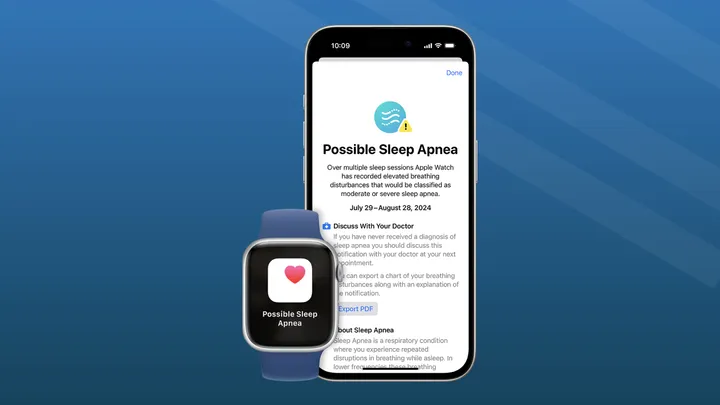Breathing Disturbances on Apple Watch: What should I do if I get a “possible sleep apnea” alert from my Apple Watch?
Raquel Rodriguez Martinez, MD, MPP

With the release of iOS 11 for Apple Watch some users will now receive alerts for possible sleep apnea. The feature, also known as “Breathing Disturbance” notifications, will provide users a powerful tool to monitor for possible signs of sleep apnea. Here’s what you should do if you receive one of these notifications from your Apple Watch.
What is sleep apnea?
Sleep apnea is a common yet serious disorder where breathing repeatedly stops and starts during sleep. It can lead to various symptoms and health complications, including cardiovascular issues, daytime fatigue, and impaired cognitive function. Many individuals with sleep apnea remain undiagnosed, making early detection crucial.
Who will receive Apple Watch sleep apnea alerts?
The new Breathing Disturbances feature is Apple Watch Series 9, Series 10, and Ultra 2. You need to run watchOS 11 paired with an iPhone running iOS 18 or later. Apple reports that the built-in algorithms will use the watch’s accelerometer and analyze a user’s data over a 30-day period. If your data shows consistent signs of moderate to severe sleep apnea, you will receive an alert.
If you receive an alert, you will be able to export a PDF that includes information like what your breathing disturbances have looked like over a three month period.
What to do if Apple Watch gives you a “Possible Sleep Apnea” alert?
If you receive a notification from your Apple Watch or your Health app suggesting you have “Possible Sleep Apnea”, you can take the following steps to protect your health:
-
First, don’t panic, but do take the alert seriously. The Breathing Disturbances feature is only a screening tool and not diagnostic. This means that you will need further evaluation to determine whether you have sleep apnea.
-
Second, make an appointment with your primary care doctorhttps://www.empirical.health/apple-watch-sleep-apnea. It may be helpful to bring a printout of your Breathing Disturbances report with you to your doctor’s visit; however, this is not required. Your doctor will ask you more questions about any symptoms you may have. Together, you and your doctor will decide whether a formal sleep study is needed to confirm a diagnosis and whether any other testing is needed.
-
Third, while you wait for your doctor’s appointment or sleep study to be completed, consider starting on lifestyle adjustments that may help improve your overall quality of life and reduce your sleep apnea risk. These may include reducing alcohol use, committing to a regular sleep schedule, and maintaining a healthy weight.
What if I don’t get an alert, but I think I may have sleep apnea?
It is possible that you may have sleep apnea even if you don’t get an alert from your Apple Watch. At this time the notifications for this new feature will only alert people who have a moderate to severe risk for sleep apnea. Mild cases may not receive an alert.
If you are experiencing any symptoms like fatigue, daytime sleepiness, snoring, frequent nighttime awakening, etc. or you are concerned you may have sleep apnea, you should talk to your primary care doctor to ensure you receive an appropriate evaluation.
The integration of sleep apnea notifications on devices like the Apple Watch represents a significant advancement in personal health monitoring. By providing users with early warnings about potential sleep disorders, it empowers individuals to seek timely medical advice and interventions.
If your Apple Watch notifies you of potential sleep apnea, take it as an opportunity to engage with your health proactively and consult with healthcare professionals for further guidance.
How to book an Empirical Health doctor appointment
If you don’t have a doctor or are having a hard time connecting with your doctor, you can access a board-certified doctor through Empirical Health, covered by most major insurance!
Get your free 30-day heart health guide
Evidence-based steps to optimize your heart health.
